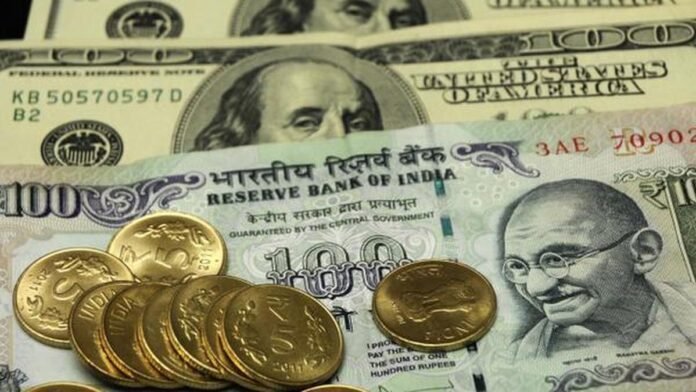Foreign institutional investors (FIIs) have made a strong comeback in the Indian stock market, pushing the rupee to rally further and erase all its losses for 2025. With fresh inflows strengthening the currency, the rupee appreciated by 34 paise on Monday, closing at 85.63 against the US dollar. Investors responded positively to the renewed bullish sentiment in domestic equity markets, which saw a surge in buying activity over the past few sessions.
After months of selling, FIIs have reversed their trend, injecting over Rs 13,500 crore into Indian stocks in just three days. This marks a significant shift from their previous outflows, which had totaled Rs 1.39 lakh crore since January. The renewed confidence in Indian equities has directly contributed to the rupee’s strength, providing much-needed relief after a period of consistent depreciation.
The rupee’s appreciation over the last seven sessions reflects a strong recovery, gaining 157 paise during this period. On Friday, the currency had already climbed by 38 paise, closing at 85.98. This latest rally signals renewed optimism, with the rupee now up 2.63 percent from its recent low of 87.95. As the domestic market remains buoyant, analysts predict further strengthening in the coming days.
Weak global crude oil prices have played a key role in easing inflation concerns, adding to the rupee’s upward momentum. Meanwhile, the US dollar’s continued weakness has further supported the Indian currency’s rally. The rupee opened at 85.93 on Monday, fluctuating between an intraday high of 85.49 and a low of 86.01 before settling at 85.63.
Stock market indices surged by 1.40 percent, further boosting investor confidence. Analysts believe that if the rupee continues its appreciation, FIIs may increase their participation in the Indian stock market, leading to sustained capital inflows. With global factors aligning in favor of emerging markets, the Indian economy stands to benefit from the renewed FII interest.
The rupee’s recent performance has not only erased its 2025 losses but has also positioned it for further gains. On December 31, 2024, the currency had closed at 85.64 against the US dollar. The current levels suggest that it has fully recovered from the turbulence of the past few months. If the US dollar index remains below 104 and foreign inflows persist, experts predict that the rupee could test the 85.00 level in the near term.
Market participants are closely watching global developments, particularly the Federal Reserve’s monetary policy stance and the movement of crude oil prices. Any major shifts in these factors could influence the rupee’s trajectory in the coming weeks. Meanwhile, the Indian government and the Reserve Bank of India (RBI) continue to monitor the situation, ensuring that market stability is maintained.
As FIIs return with renewed confidence, the outlook for the rupee appears increasingly positive. The coming sessions will determine whether this trend sustains, but for now, the currency has firmly rebounded, restoring investor faith in India’s financial markets.
The broader economic environment also favors the rupee’s continued recovery. The Indian economy has shown resilience despite global uncertainties, and key indicators such as industrial production, GST collections, and corporate earnings have remained robust. With inflation largely under control and growth projections stable, foreign investors are finding renewed confidence in India’s economic trajectory.
Another factor aiding the rupee’s appreciation is the Reserve Bank of India’s (RBI) steady policy approach. The central bank has maintained a strong foreign exchange reserve position, intervening strategically to prevent excessive volatility. RBI’s forex reserves remain well above $600 billion, providing a cushion against external shocks and ensuring stability in the currency markets.
Additionally, India’s improving trade balance is contributing to the rupee’s strength. A decline in global crude oil prices has reduced the country’s import bill, narrowing the trade deficit. At the same time, strong exports in sectors like IT services, pharmaceuticals, and engineering goods have supported dollar inflows, further stabilizing the currency.
Looking ahead, analysts suggest that foreign investors will continue to monitor global economic trends, particularly the US Federal Reserve’s interest rate policies. If the Fed maintains a dovish stance and keeps rates steady, emerging markets like India could see sustained FII inflows, providing further support to the rupee.
As the rupee consolidates its gains, businesses and policymakers remain optimistic about the road ahead. A stable and appreciating currency not only boosts investor sentiment but also reduces inflationary pressures by making imports cheaper. If current trends persist, the Indian economy could witness stronger capital inflows, reinforcing its position as a preferred destination for global investors.



